Because they eat on the wing, they’re not real fun to feed in rehab settings. Rehabbers report varying degrees of success in working with nighthawks. No rehabber I’ve contacted has ever been able to get them to self-feed at all, although one or two have reported that their birds did at least come to them for food after some time. This little girl hasn’t reached that phase yet; she has started mostly sitting still for me to pick her up (unlike in the video below), but then I have to pry that little beak open and syringe feed her a special brew containing all sorts of yummy things, including dried insects, to replace the insects she can’t vacuum up with that open mouth in mid-flight. Sounds delish, no? (Hey, it beats cutting up rodents, which is my least-favorite part of rehabbing raptors.)
|
Yep, been a sloooow week: the red shouldered hawk was sent back to his territory to be released, and the only intake was a young common nighthawk with a broken “hand.” Sooo…you get a (sort of) in-depth look at just one species! (Hey, I’m not doing a whole life history here, though—just an outline, the Cliff Notes version, if you will!) Nighthawks are in the nightjar or goatsucker family, the same family as chuck-will’s-widows and whippoorwills —you know, those nocturnal birds with the tee-ninesy little beaks that open to great gaping maws. All are exclusively insectivores, meaning they don’t eat berries, etc. It’s insects or nothing for these birds. Despite their name, however, nighthawks are actually most active at dawn and dusk, more so than at night. The reason for their great gaping maws is that they eat on the wing, scooping insects up with that mouth while they fly. And, as you can see below, their tongues are almost vestigial, because when you’re effectively vacuuming your food from the air straight down your esophagus, there’s not much need for a well-developed tongue. They have short, stubby little legs, and their middle toe on each foot has a comb-like bit of stiff-ish material that apparently aids in grooming. These sweet little birds, app. 8-10 inches long, breed throughout the US and Canada during the summer and winter throughout South America. That means this little darlin’ should be on her way to her winter grounds, but she has a wing fracture that will delay and possibly prevent her migration. While these photos look really nasty, they were taken the night she came in, shortly after I rinsed, cleaned and medicated the flesh wound right at her wrist. The flesh wound is healing nicely now. The actual fracture is in the metacarpals, the small bones past the wrist, same as the bones in our hands between the wrist and fingers. Sometimes these fractures heal to allow flight; sometimes they don’t. We won’t know in her case for a month or so. How do I know she’s female? The males have a white bar on their tails. Both sexes have the white wing bars. The lack of a white throat band identifies this little lady as a youngster, probably from a late clutch—nighthawks don’t build nests; the females just lay and incubate the eggs on a level surface. Because they eat on the wing, they’re not real fun to feed in rehab settings. Rehabbers report varying degrees of success in working with nighthawks. No rehabber I’ve contacted has ever been able to get them to self-feed at all, although one or two have reported that their birds did at least come to them for food after some time. This little girl hasn’t reached that phase yet; she has started mostly sitting still for me to pick her up (unlike in the video below), but then I have to pry that little beak open and syringe feed her a special brew containing all sorts of yummy things, including dried insects, to replace the insects she can’t vacuum up with that open mouth in mid-flight. Sounds delish, no? (Hey, it beats cutting up rodents, which is my least-favorite part of rehabbing raptors.) Right now, this little nighthawk is doing quite well; we’ll see how things play out long-term and hope for the best—the “best” best being that her wing heals and she regains full flight capability in time to make the tail-end of migration. Second-best would be her wing heals to allow full flight but she has to overwinter, but we’re aiming at the ideal scenario! As a final note this week, thanks to those of you who donated to Bubba & Friends. Steve’s updated his blog—just a short entry, but here’s the link: http://www.bubba-and-friends.org/1/post/2013/09/finally-were-back.html. That gal he features is the downy RT who came to LWR in May (see http://www.laurenswildliferescue.org/2/post/2013/05/another-week-more-or-less-another-slew-of-babies.html). I’ve seen a pic of her fully feathered, and you’re in for a treat when he posts some of those shots!
13 Comments
mbird
9/15/2013 12:55:51 pm
Beautiful not usually seen bird. It must be very difficult for you and the bird since they feed on the wing. I so hope it survives!
Reply
Laurens Wildlife Rescue
9/15/2013 01:00:17 pm
Hey mbird, they ARE gorgeous little things, aren't they?! She's doing well thus far--weight is constant; poop looks good. So we'll keep our fingers crossed!
Reply
Pipette
9/15/2013 02:38:14 pm
Wow, I found that all very interesting - thanks for taking the time to explain about nighthawks. What a pretty bird!
Reply
Laurens Wildlife Rescue
9/15/2013 02:46:41 pm
Glad you enjoyed it, Pipette! Aren't those beaks/mouths amazing?! She's actually not as difficult to feed as you'd think, using the syringe. I just hate having to add to her stress with all the additional handling, but it's that or starvation, so...hand feeding it is. I'm hoping for speedy enough recovery to make migration, too, but we'll see...
Reply
9/15/2013 02:54:06 pm
Hi Vonda Lee, I can't PM you because my account is a 'page' but if you send an email to this address I can share with you our rehab protocol. Carolyn
Reply
Laurens Wildlife Rescue
9/15/2013 03:33:48 pm
Have done, and thanks, Carolyn!
Reply
Ann Feldman
9/16/2013 02:50:53 am
When we first moved here in the late 70's we would hear nighthawks in the summer. But they prefer gravel roofs and those have mostly been replaced. I miss the calls still.
Reply
Laurens Wildlife Rescue
9/16/2013 03:14:03 am
This lady only "rasps" at me. I'd call it a growling sound, actually, but apparently the proper term for the sound is rasping. Go figure...
Reply
Sally Davidson/kh
9/16/2013 03:26:02 am
Thank you for sharing all this knowledge about Nighthawks - wow, hope she will continue to eat and recuperate. She's in the best of hands!!
Reply
Laurens Wildlife Rescue
9/16/2013 03:45:00 am
Hey Sally, glad you enjoyed it! Swift Care Ontario, a rehab center specializing in swifts, swallows and other "on the wing"-eating insectivores, has kindly shared their best practices, so her chances have definitely improved thanks to their generosity.
Reply
dmortii
9/16/2013 02:25:15 pm
Great info. Always love your stories. I've never heard of this bird prior to this. Thanks!
Reply
Laurens Wildlife Rescue
9/16/2013 02:33:08 pm
Thanks dm--glad you enjoyed it!
Reply
Debra J Stovall-Tromble
7/21/2018 04:44:09 pm
How much & how often do you feed her?
Reply
Your comment will be posted after it is approved.
Leave a Reply. |
Archives
April 2023
Categories
All
|
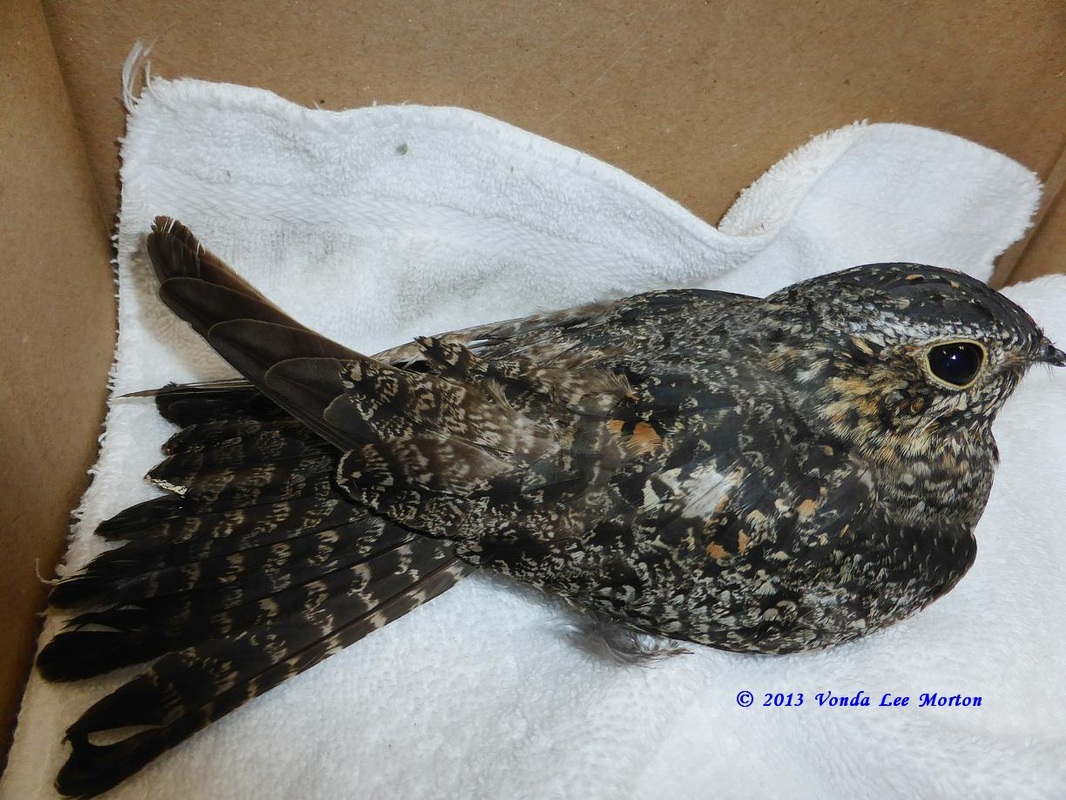
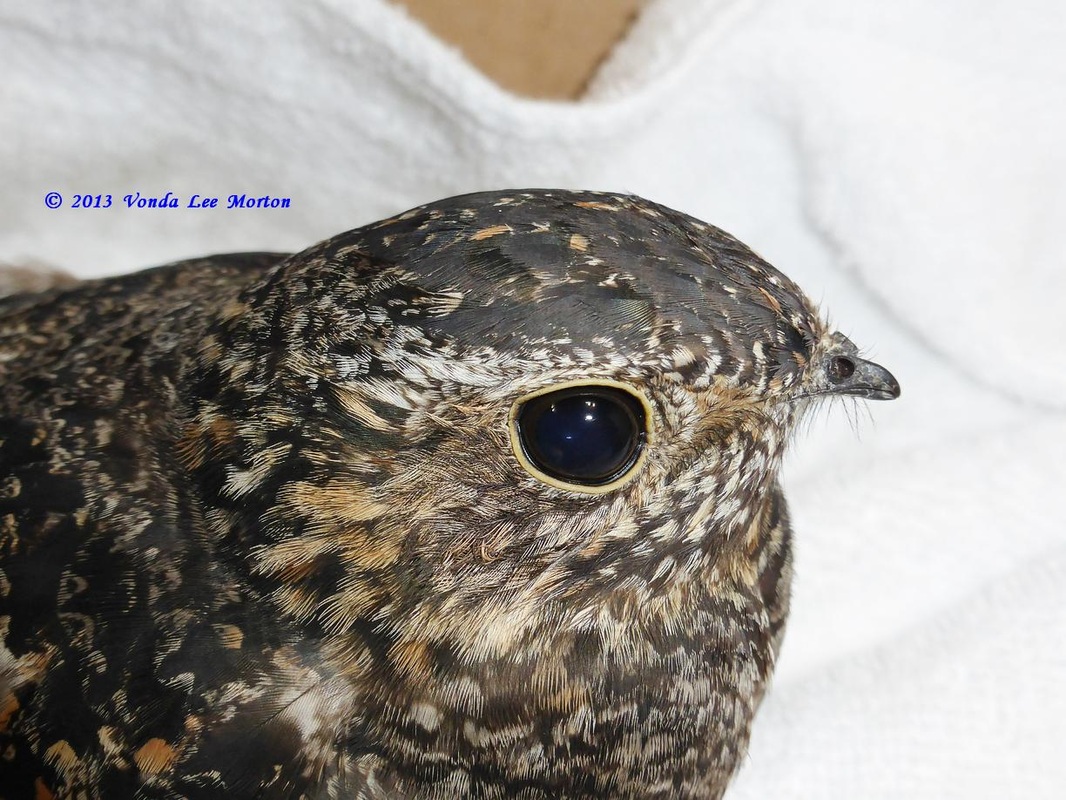
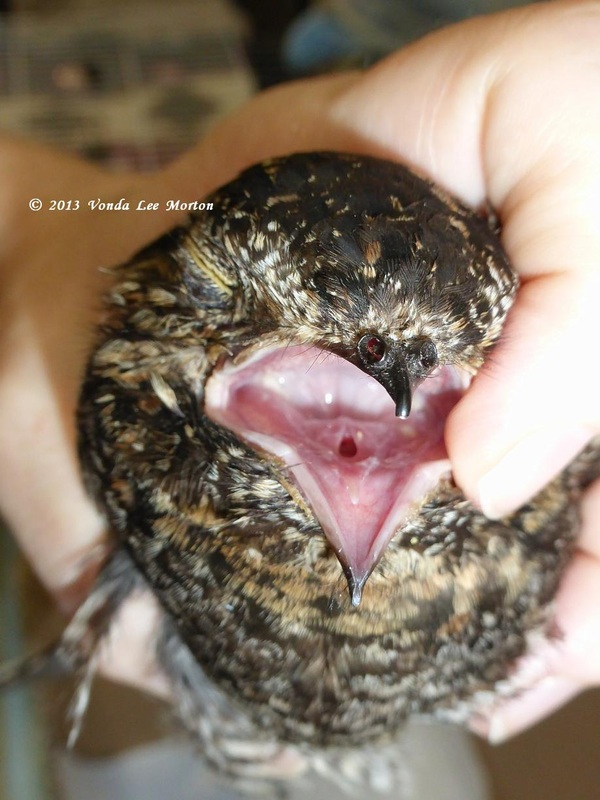
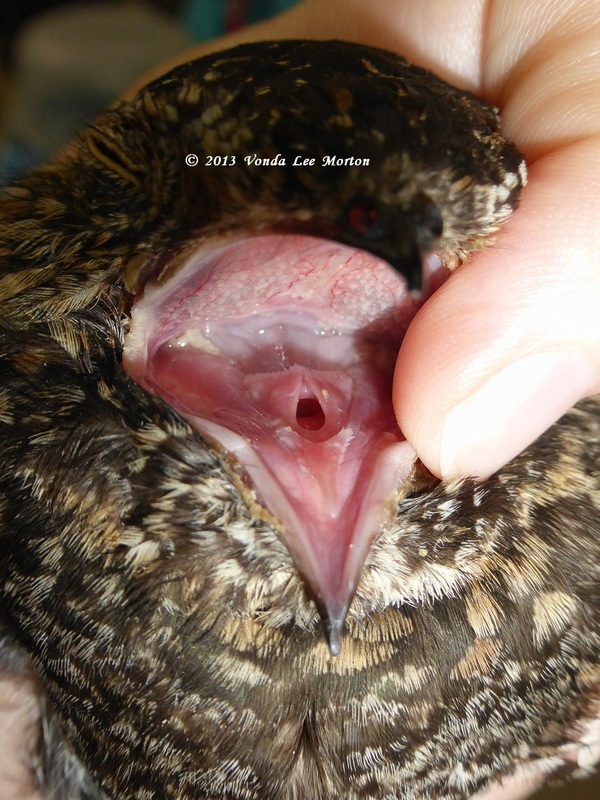
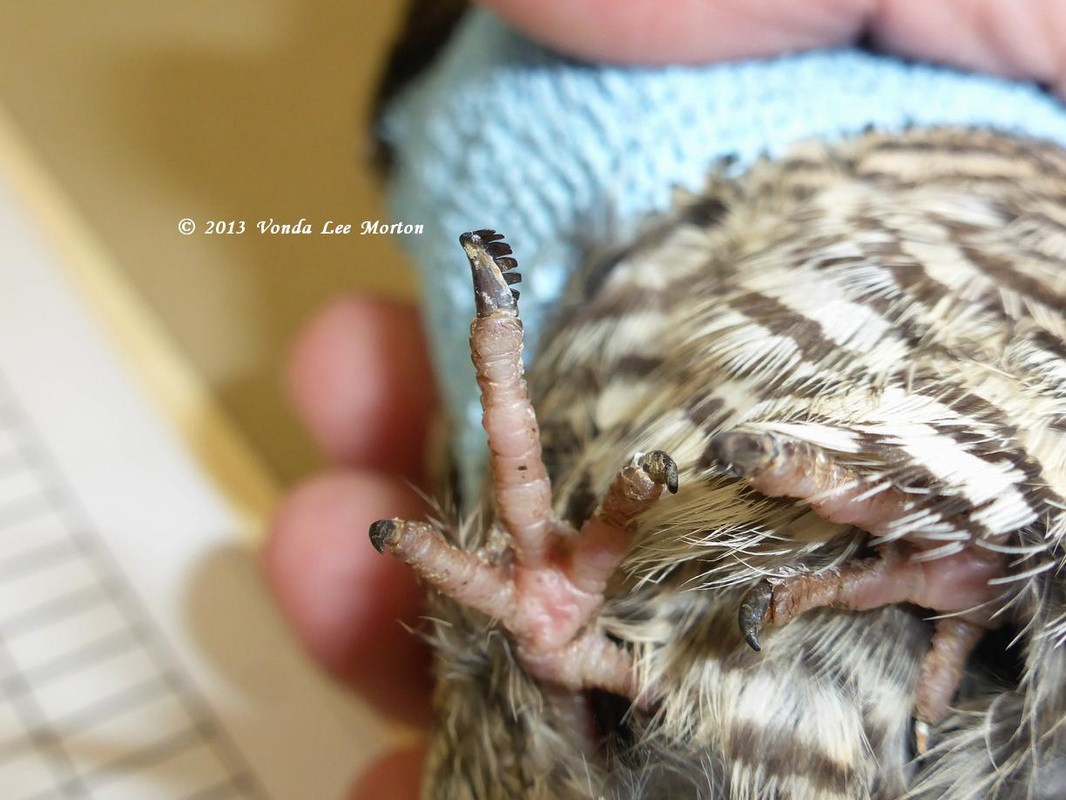
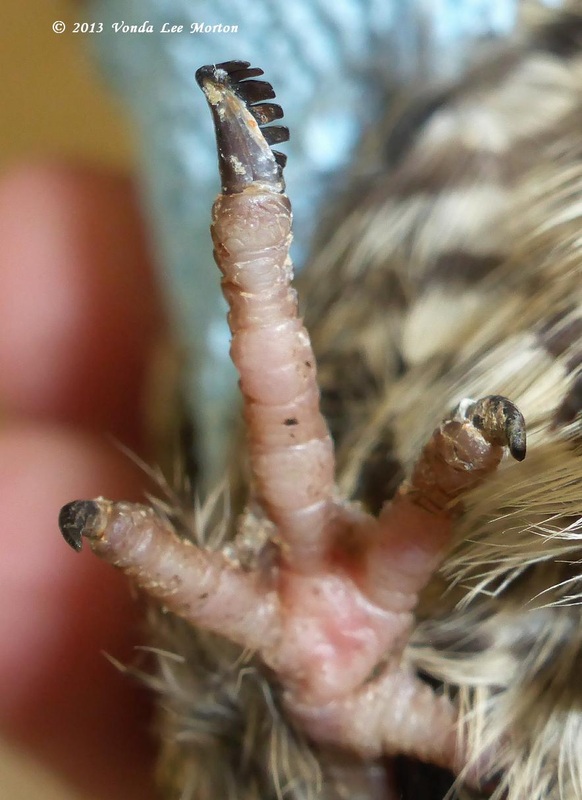
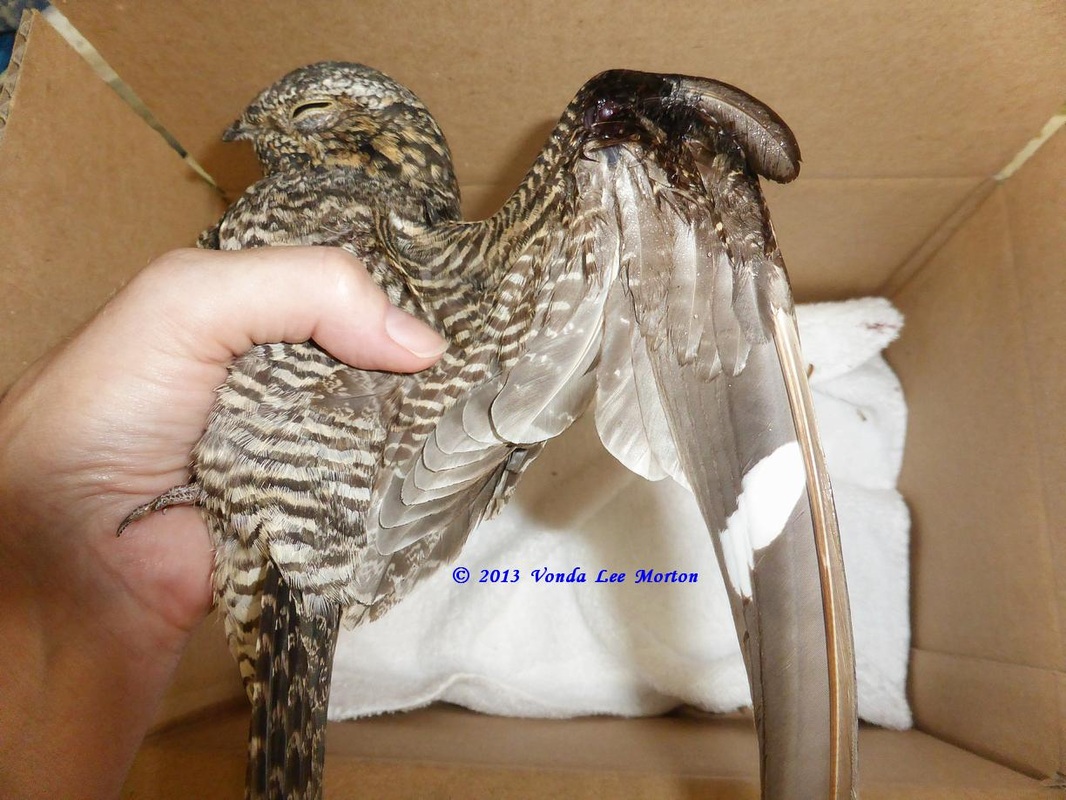
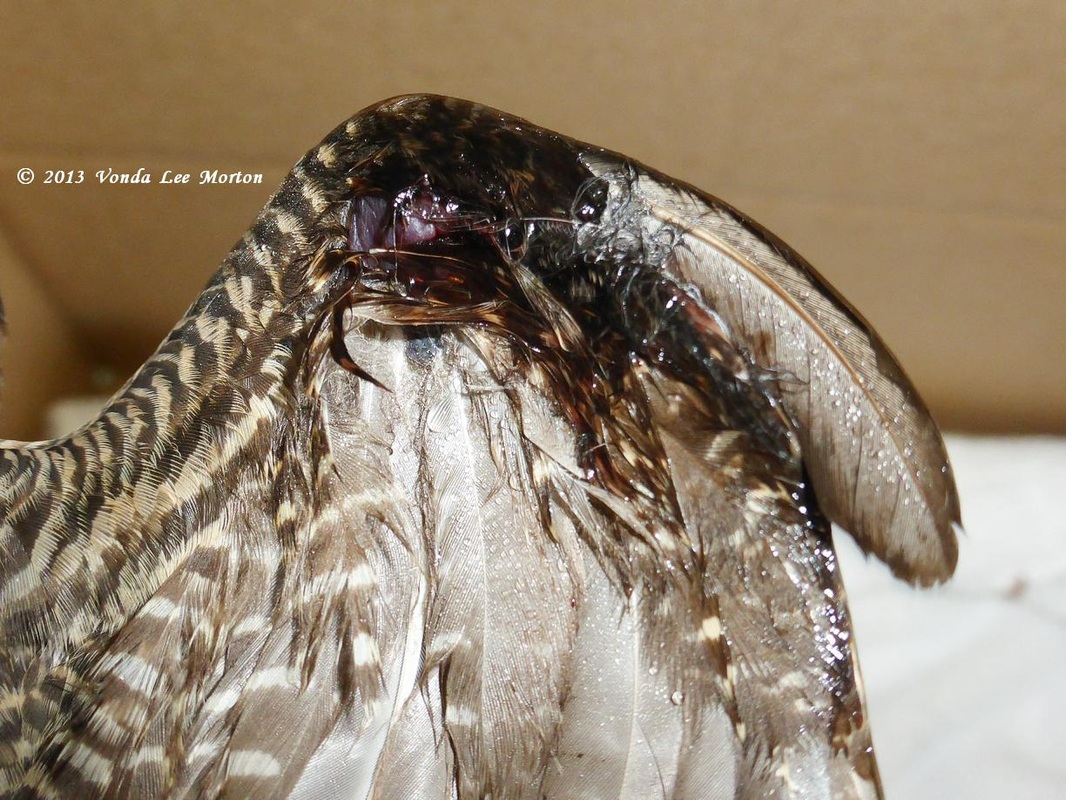
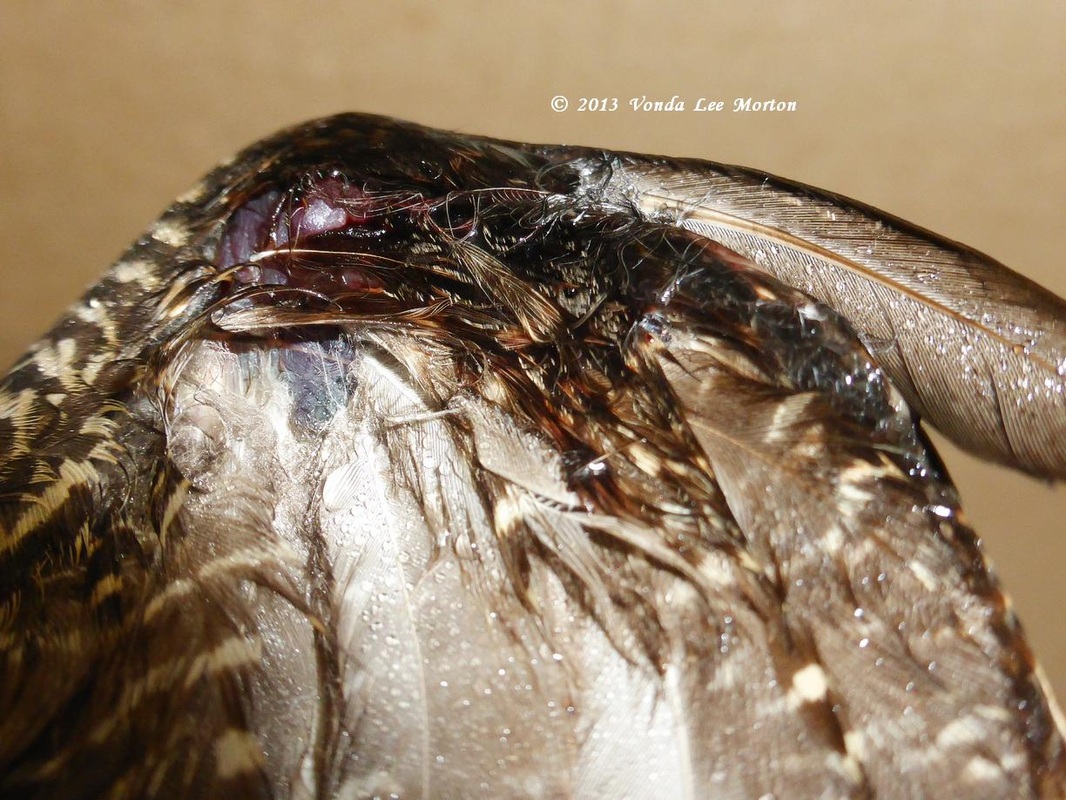

 RSS Feed
RSS Feed
